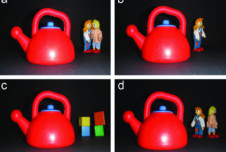Our students are driven by a need to belong.
In classroom environments where the need to belong is thwarted, however, young people may grasp for power and prestige rather than learn how to form authentic connections. We all know students who try to fit in in negative ways: bullying, striving to be “cool,” buying in to peer pressure, or conforming to negative stereotypes. They typically lack the necessary social-emotional skills to form healthy, supportive relationships and do not understand that these behaviors obstruct rather than satisfy the need to belong. This can produce a fear-based classroom atmosphere that impedes learning.
We can intentionally design classroom communities that challenge this dynamic by teaching and modeling compassionate listening. When clear ground rules for respectful communication are established from the outset, classrooms become safe places for students to share their lives with each other and find support for their growth and development. When students’ need to belong is met in the context of a healthy learning environment, authentic inquiry and higher-order thinking naturally emerge.
How to cultivate compassionate listening in the classroom

According to Thich Nhat Hanh, deep, compassionate listening has only one purpose: to help another person empty their heart. Even if a listener disagrees with someone’s perspective, they can still listen attentively and with compassion. The mere act of listening helps relieve the pain that often clouds perception, and when people feel heard, validated, and understood, they are better able to figure out solutions on their own. Deep listening and the emotional resonance it creates calms the nervous system and helps create a state of optimal learning—open and receptive, trusting and calm, yet alert. This is the neurological state we want to cultivate in our classrooms.
Daniel Siegel describes this state as “feeling felt.” We’ve all experienced that sense of relief when someone truly “gets” us. Research shows that emotional resonance between young children and their caregivers results in the creation of neural pathways in the prefrontal cortex of the brain (the seat of higher-order functions). For adolescents, whose brains are more malleable and receptive to their environments than they will ever be again, creating resonant environments in the classroom may be especially important.
For students to mirror each other’s felt experience, they first need to share responsibility for creating a space where everyone feels they belong. In my classroom, I ask, “What do you need to feel safe with the people in this room?,” and students invariably generate a list of relational qualities that embody compassion: acceptance, trust, respect, and support. Because they are hungry for authentic connections, they readily agree to create a learning community with these qualities as the foundation. The appreciation they feel for having a place to share their deeper thoughts and feelings is often palpable.
When my student Justin shared how closely he monitors his behavior to avoid being stereotyped as “unmanly” or “weak,” other boys in the classroom shared similar feelings. Their feedback helped Justin realize he was not alone, but rather that his experience was part of a larger sociological phenomenon that affects many young men. When Sabrina, a young woman of color, described being followed by a clerk at the mall, she was heartened to hear her classmates react with outrage and remind her that she deserves better. Michael revealed the pain and isolation he felt after being rejected by a friend, and hearing his classmates respond with support and understanding allowed him “to open up and be more real.” He began the year “closed off” from others, he said, but over time “learned to be more vulnerable and accept [his] emotions.”
The seven principles below can make the listening process more explicit and help students cultivate the compassionate listening skills they need to build a strong learning community.
1. Be fully present. We bear witness to someone’s felt experience by giving them our complete and undivided attention. Paying full attention when someone is speaking creates safety and focus in the classroom. Compassionate listeners maintain complete silence and pay attention not only to words they hear, but also to facial expressions, body language, and tone of voice, noticing even the silences between words.
2. Know listening is enough. Listening with deep attention involves a calm, relaxed state of mind, free of the desire to “fix” someone or solve their problems for them. It does not involve giving advice or intervening in any way. If our minds are busy coming up with solutions for the speaker, we fail to truly listen.
3. Respond with acceptance. Deep listeners are motivated by the desire to understand how others feel and how their experiences have affected them. Their genuine interest and heartfelt concern make it safe for others to share their vulnerabilities because they sense that what they say will be received without judgement.
4. Understand conflict as part of real-life learning. A learning community in which people are encouraged to be honest and express how they feel involves a degree of risk. Conflict may arise. Sometimes this happens, and working through difficult feelings may take time. However, when we stay connected and stick with the process, conflict can be a catalyst for positive change. When conflict can be resolved, relationships often become stronger.
5. Ask authentic questions to learn more. By asking open-ended questions like “What was that like for you?,” “Can you tell me more about that?,” or “What were you experiencing?,” compassionate listeners guide speakers to share more deeply. These questions are motivated by the desire to honestly learn more (as opposed to reinforcing preconceived notions). If they think they may not have understood something, listeners can repeat back what they think they heard and ask for clarification. “Did I hear that right?”
6. Be gentle with yourself. Deep listening involves compassion for yourself as well as for others. Accept yourself and your internal feeling responses without judgement. Allow yourself time to process and learn.
7. Treat the candidness of others as a gift. Honor the trust others have placed in you and keep what you hear confidential.
Compassionate listening skills can be taught as tertiary units in advisory groups, or in mindfulness, conflict resolution, or anti-bullying courses. Many teachers, however, embed them in their regular instruction. My colleague José’s first graders learn social-emotional relationship skills in daily meetings. They generate “rules of respect” for their classroom, and José says these norms “make the meaning of empathy explicit.”
When students share personal stories in the classroom, teachers help them make connections to the larger world they live in—stories in history, literature, politics, and other academic disciplines. Baltimore teacher Jasmin’s seventh graders share their encounters with bullying and relate their experiences to characters they are reading about in literature. Atlanta teacher Caroline’s high school students explore their feelings about themselves as math learners. They discuss the role race and gender identity may play in the math achievement gap. These connections help them consolidate their insights and expand their worldviews.
As Anna, an eighth-grader, observed, the stories her classmates tell “link directly to the way humans have been acting for ages and become an exploration of the human condition, or at least the teenage condition. It’s almost like reading a book, except the main character is one of my classmates.”
Scaffolding reflective and interpersonal experiences with academic material helps students learn systems thinking and self-directed learning. Guided by their own questions, which arise out of classroom sharing and compassionate listening, students become inspired to learn.
Young people need to learn how to create inclusive social spaces in which everyone feels a sense of belonging. Such resonant environments not only foster respect and acceptance; they integrate emotional and cognitive processes, enabling young people to think more clearly. Learning compassionate listening skills will serve them well for the rest of their lives.








Comments